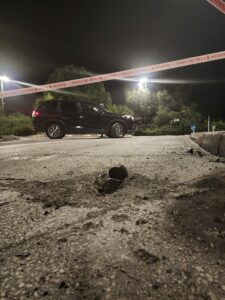Faced with the two options of full-scale war with Hezbollah, and a diplomacy-based ceasefire in the north, the Israel Defense Forces is currently following a middle, interim path.
The objective of this third way is to obtain as many Israeli military gains as possible, as long as fighting with Hezbollah continues, but to do so without descending into war, and to maintain this situation until a ceasefire is reached.
The concept is based on damaging a wide array of Hezbollah’s capabilities so long as this is possible, before a ceasefire is eventually reached, meaning that this third path is designed to be temporary, and lead to eventual quiet.
The IDF’s achievements against Hezbollah are impressive according to recent data released by the Israeli military.
And yet, it is unclear whether this will suffice. It is far from clear whether a cessation of fire, in order to enter into an unenforceable truce, could actually improve Israel’s security situation.
Under this kind of scenario, Hezbollah can cover very quickly. In the meanwhile, with every attack and counter-attack in northern Israel and southern Lebanon, there is also a risk of further escalation and slide into war.
According to IDF information released on March 12, Israel has struck around 4,500 Hezbollah targets, killing over 300 Hezbollah terrorists, and injuring more than 750.
The IDF Northern Command’s Fire Control Center and the Israeli Air Force worked closely together to hit over 1,200 Hezbollah targets from the air and 3,100 targets from the ground.
“These Hezbollah terror targets, located in both Lebanon and Syria, include weapons storage facilities, military structures intended for Hezbollah’s offensive activity and operational command and control centers where terrorists were located,” the IDF Spokesperson Unit stated.
Hezbollah’s casualties include five senior commanders, and dozens of terrorist cells that directed or fired anti-tank missiles and rockets at Israel, according to the data. These strikes impair Hezbollah’s air and ground capabilities, as well as its chain of command, the military said.
“The IDF’s operations against Hezbollah terrorist targets and operatives are in response to the organization’s ongoing attacks against civilians and communities in northern Israel. The IDF is continuing to operate to drive Hezbollah and its forces out of southern Lebanon in order to enable the residents of northern Israel to return to their homes in safety and security,” the IDF Spokesperson said.
The IDF also released a video of Maj. Gen. Ori Gordin, commanding officer of the IDF Northern Command, addressing the Command’s Fire Control Center. He described how the Center prepares targets for attack for each subsequent day and for the weeks ahead.
“In the last five months, the number of targets we struck, and the number of targets we approve each day for the following day and week, is in my view very impressive,” said Gordin.
Gordin expressed “full confidence” in the Northern Command and its Fire Control Center to maintain this current rate of fire, as well as to be able to significantly step up the rate of Israeli strikes when necessary.
His comments reveal that even though the IDF is currently pursuing its middle path, it is nevertheless preparing in earnest for the scenario of full-scale war arriving.






